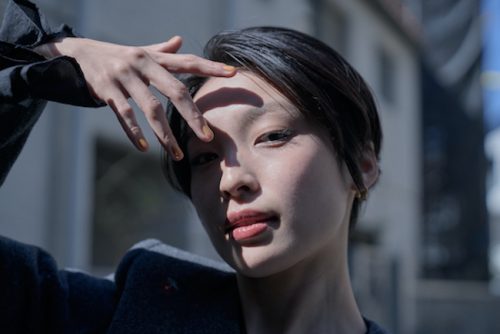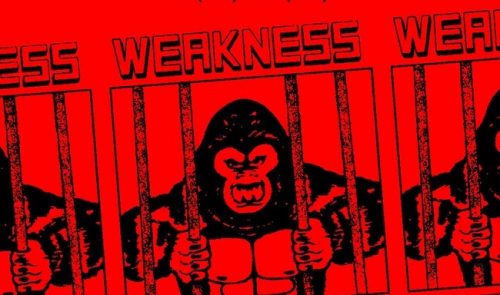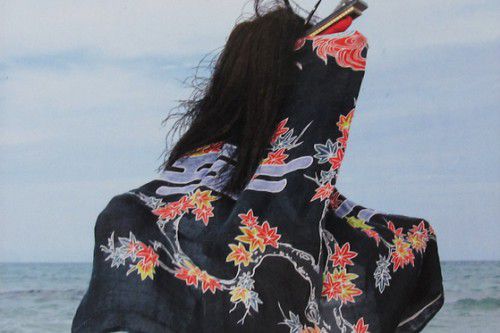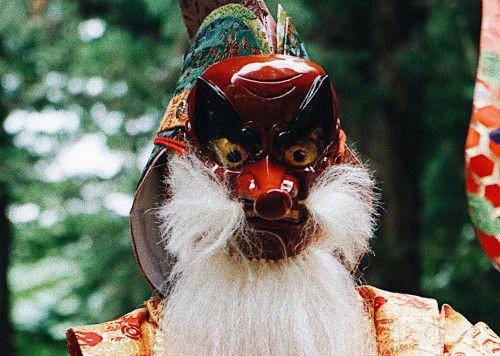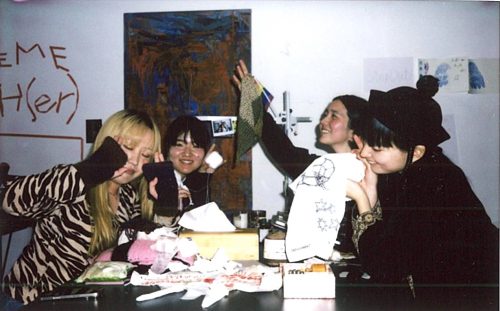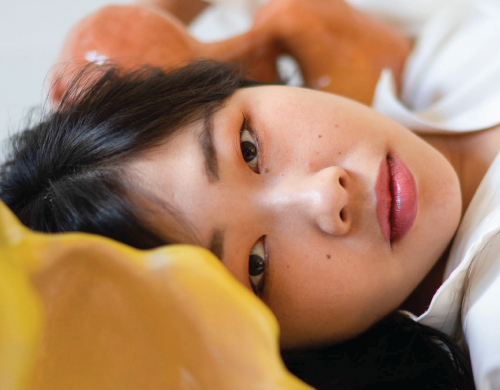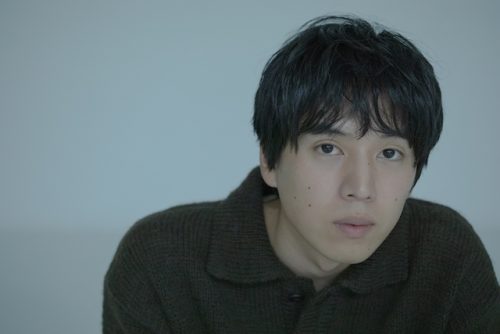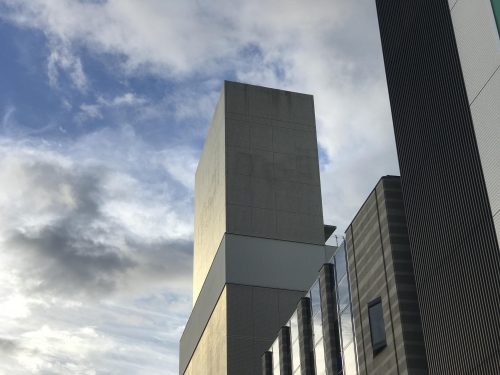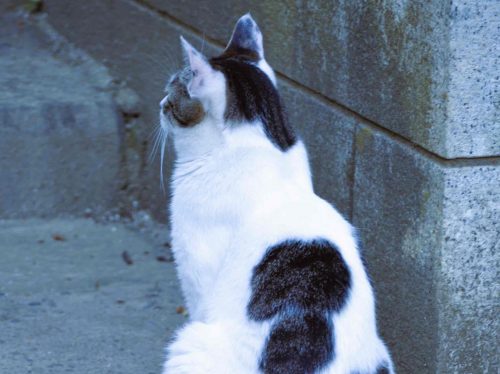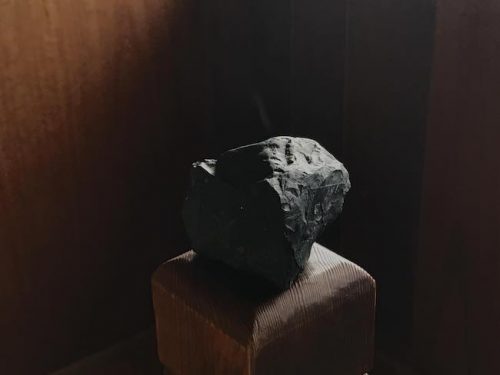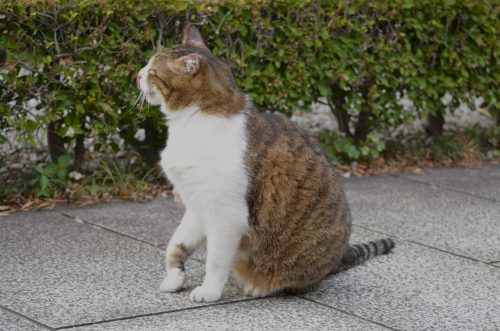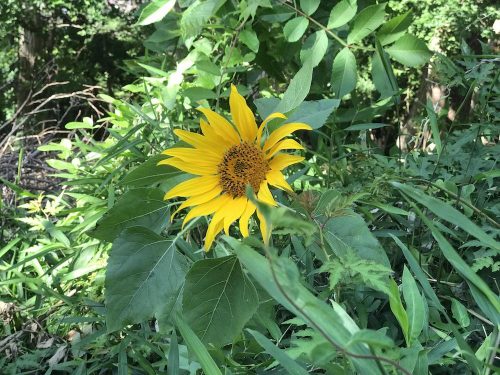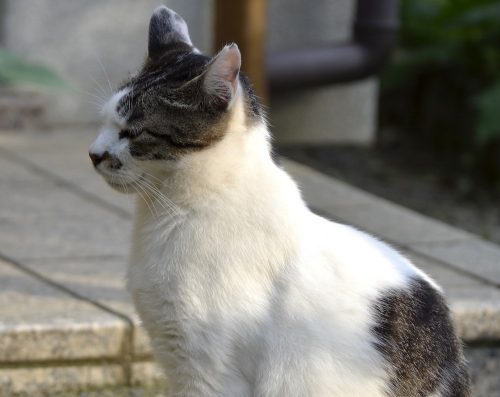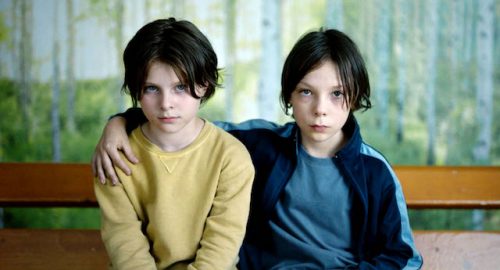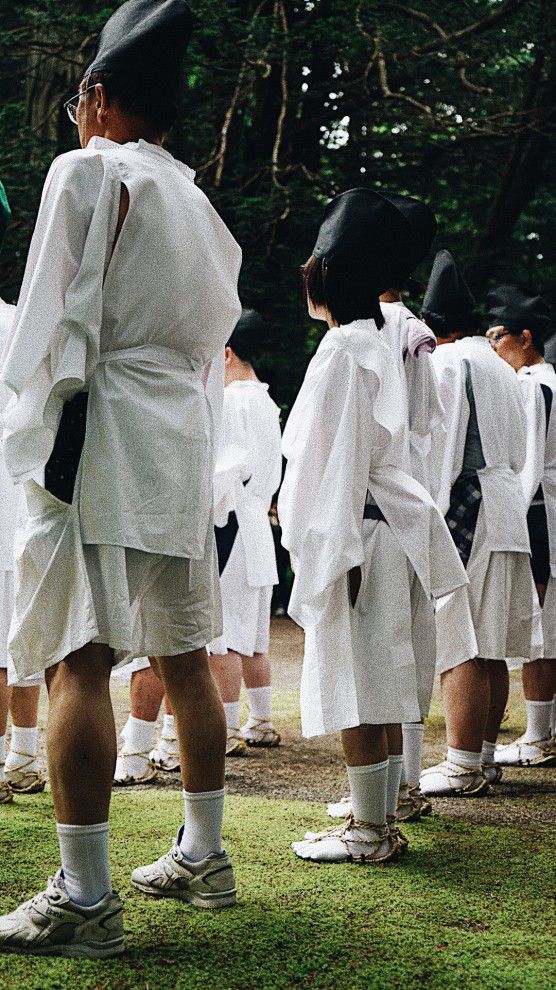
日本の祭りは、自分たちの住むコミュニティや他の地域に赴いて楽しむ風物詩となっている。そのような親しい存在でありながら日本古来の信仰とも結びつく祭りについて、そのルーツと変遷の様を考えることは、自らのアイデンティティを見直すきっかけになるのではないだろうか。最先端のトレンドや現象を通じて現代の民俗学を追求する民俗学者・畑中章宏に、日本の祭りの変容と、いま我々が祭りのルーツを考えることの重要性を訊いた。
The Japanese festival is a joyous tradition within the community in which people live.It seems that thinking about its roots and transitions which are associated with Japanese ancient faith while witnessing its evolution may be a catalyst for reviewing their own identities. We have the honor to ask Folklorist Akihiro Hatanaka about his pursuit of contemporary folklore through recent trends and phenomenons, as well as the importance of the re-examination of the roots of Japanese festival.
–多種多様な祭りが世界各地にありますが、日本の祭りの特性とはどんなものですか?
畑中「例えばヨーロッパ諸国においてキリスト教伝来よりも前からあった精霊信仰というものは、キリスト教によって覆いかぶされてしまい見えにくくなりました。それに対して、日本にももともと精霊信仰があったところへ仏教という外来の宗教が入ってくるわけですが、キリスト教のように強い一神教ではない仏教は、もともとあった精霊信仰を覆い被せるのではなく、共存して存続しました。ですから日本人の信仰とは、“山川草木に遍在する精霊”と、仏教の“共同体を守ってくださっている祖霊”が上手く融合しながら神のイメージを形作っていて、それらを祀って今日まで存続しているのが日本の祭りの特性と言えます。
シャルル・フレジェというフランス人の写真家がいますが、彼が発表した『YOKAI NO SHIMA:日本の祝祭―万物に宿る神々の仮装』という写真集は、フランス人としての彼が、先述の通りヨーロッパでは覆い隠されている精霊が日本の祭りではむしろ支柱として今でも存続しているということを発見しアートとして昇華したものです。この写真集にあるように、動物の毛皮や藁を纏うという日本各地の祭りのコスチュームにも見られる精霊のイメージは、中央ヨーロッパや東ヨーロッパの山岳部でも見られるものなのですよ」
–バリ島の祭りで行われるバロンダンスが岩手県の早池峰神楽と通じるところがあるという説もあるように、離れた地域とも共通点が見られるのは不思議ですが、何故そういった現象が起こるのでしょうか。
畑中「原初の祭りという物は五穀の豊穣を願ったり恵みへの感謝を行い神を祀るものでした。ですから各地域の生活様式によって収穫物も異なるために祀る対象もそれぞれに異なりますが、逆に言えば離れた地域であれど生活様式が同じであれば人々がイメージする神の姿は良く似るのは自然なことです。また、バリの方の踊りが早池峰神楽と似ているということは先ほどの見解に加え、踊りや音楽のリズムといった身体的なものがアジア人の身体感覚として共通しているところにも起因していることも考えられます」
–生活様式は人々の信仰を、身体感覚は神に捧げる踊りや音楽をいうものを反映し、それらが原初の祭りというものを形成したのですね。生活様式が大きく変化した現代において、祭りの形も昔のものとは異なってきているのもうなずけます。
畑中「非日常という意味での“ハレの日”というものの在り方も、第一次産業によってつましい生活様式だった時代から、衣食住が近代化されたことで日常と非日常の境目が曖昧となった現代では大きく変化しています。しかし特定の日に特別な衣装を纏い、人々が変身して日常と非日常に大きく区切りをつけるという現象は、今の日本でもハロウィンといったイベントにも見られるものです。ハロウィンという共通のイベントに行く、という選択をとった人たちというある種限定的なグループの中で楽しむということが行われていて、身に纏う衣装もその年ごとに自分で選択している点は、ハレの日の現代における在り方といえるでしょう。
話は少しそれてしまいますが、何故渋谷という街で特にハロウィンが盛んなのか考えたことがあるのですが、渋谷が持つ入り組んだ地形というものがハロウィンと親和性があるからではないでしょうか。繁華街でありながら完全に区画されておらず整然としていないのでちょっと道を曲がれば路地があったりするために、散策しながら明るいところから暗いところに入っていくということが、特別でファンタジーな空間として機能します。現実から遊離した幻想世界としての渋谷の街が、現代のハレの日を上手く演出するのだと思います」
–なるほど。ハレの日の在り方は変貌を遂げながらも存続しているのですね。
畑中「都市に限定して言うと、伝統的な神を祀る日本の祭りというもの自体は今となってはエキゾシティズムといった側面が大きいと思います。祭りばやしを聞いても、西洋音楽を主にして聞き育った現代に生きる我々としては、親しみのないものになっています。浴衣を身に纏っても、慣れ親しんだものではなく“伝統的なもの”のコスプレになっている。だから、日本におけるハロウィンは本来のケルトの収穫祭としての意義はもはや失われているけれど、子供の頃から慣れ親しんだアニメや映画の衣装を着て楽しむという、都市における現代の若者たちにとっては本当の意味で“DNAが騒ぐ”ような非日常、つまりハレの日といえるのではないかと考えられます。
また、かつて古代日本から人々は蚕を育てていましたが、明治時代になってから養蚕は生糸を輸出する目的となり大きな収入源として爆発的に活発化したことにより、それまで農業の人たちが祈願していた五穀の豊穣とともに、蚕の信仰というものが近代になって急きょ生み出されたということもありました。“おしら様”という神様は、もともとはいろいろな願望を成就していた神様だったのですが、それが近代以降では蚕の神様として祀られるようになったのです。要するに、その時々の人々の望むものの変化に伴って祭りというものの在り方も形成されていくのです」
—— There are a wide variety of festivals around the world, what are the characteristics of Japanese festival?
Hatanaka: For example, the spiritual belief that existed before the spread of Christianity in European countries was obscured and difficult to see, whereas in Japan there was originally a spiritual belief before Buddhism's was first introduced. Buddhism, which is not a strong monotheism like Christianity, coexisted and survived without covering the original spiritual faith.
The Japanese shaped their belief in God while having the image of the uneven distribution of female spirit and the ideology of community in Buddhism. That could be considered as one of the characteristics of Japanese festival.
A french photographer called Charles Fréger has published a photo book “YOKAI NO SHIMA:Masquerade of Japanese Gods from Festival”. He found out the hidden spirit of the Japanese festival from the perspective of a European and sees that as art. As you can see from the photo book, the image of the spirit can be found in the costumes made of animals’ furs from various regions in Japan. That we also see from the mountains of central and eastern Europe.
——It is intriguing that common characteristics can be seen in distant areas as well, as there is the theory that the Baron dance performed in the festival of Bali shares similar characteristics with Hayamike Kagura in Iwate prefecture. What do you think about that?
Hatanaka: The original primitive festival was served to pray for the abundance of food and to show the appreciation for grace and enshrine the god, and so the festival subjects are different because the conditions varies according to the lifestyle of each area. In other words, it is natural that the figure of God that people imagine is similar if the way of their life is the same. Even in distant areas, like that the dancing of Bali resembles Hayate Kagura, it is also possible that the dance and music rhythm are all attributed to the common sense of their physical sensations as Asians.
——The lifestyle reflects people's faith and the body sensation reflects what dance and music dedicates to God. All together they formed the original festival. In modern days where the lifestyle has changed drastically, it is not surprising that the shape of the festival is different from that of the old days.
Hatanaka: The way of how Hare’s Day was seen as a special occasion have become ambiguous due to modernization of our life. The boundary between everyday life and special circumstances are getting blurred nowadays. Though changes have taken place, the phenomenon that special costumes are worn on a particular day stays the same It is like Japanese Halloween done in a joyous way. People get to select their own costumes and enjoy the modern Hare’s Day.I’d like to talk a little bit more about the case in Shibuya. Shibuya has the compatibility when it
comes to Halloween, as it is a special terrain on its own. Going from a bright place into the dark could be seen as a fantasy for a lot of people. The alleys formed the space. I think it is an illusionary world within the reality. It represents the modern Hare’s Day.
——I see. Hare’s Day is still here even though changes are happening fast.
Hatanaka: In terms of cities, I think that the aspect of Japanese festivals dedicated to the traditional God itself is now a big aspect of exoticism. Focusing on Western music when it comes to Festivals because it is more relatable as the age we live in. Wearing Yukata feels unfamiliar because it is like a cosplay of the traditions. The Japanese festival to the young generation has lost its original intention as to celebrate harvest. It is not more related to animation and movies for modern people. That is the modern Hare’s Day.
Besides that, people from ancient Japan used to cultivate silkworms, but since Meiji era people started to export raw silk and got income from the business. The faith people put in silkworm was real. Oshira, the god was enshrined as a god of silkworms because of that. In short,people’s desires change from time to time and it is crucial to the transition of festivals.
–祭りの在り方としての変貌が遂げられるなか、本来の祭りというものが持つ意義が失われてしまうのではないかという危惧もあるかと思います。
畑中「私は災害民俗学というものをテーマとして取り扱っています。先日も大きな水害がありましたが、毎年日本では災害が発生しています。東日本大震災の時には、車や人が津波に流されていくのを俯瞰の視点でカメラが捉えて中継していたものを他の地域にいながら画面越しに見ていた人々の多くはまさに『これは現実なのか?』と呆然と見るしかないといった状況でした。自分と身近な地域で起こった災害でない限りはどこか実感が薄く捉えてしまう。でも昔の、情報が今よりもずっと遅く視覚的でなかったはずの時代の人々の方が他の地域で発生した災害について身に染みて捉えていたのではないかと思います。昔は、災害が起こることによって農作物が採れなくなったり、海産物が不漁になったりということはそれぞれの人が生活の中で体験していることなので、たとえほかの地域でそれが起こった出来事だとしてもわが身に置き換えて実感できたわけです。現代だって、災害というのはいつわが身というように他人ごとではないはずなのに実感がなく思えてしまうのは、都市化したことで第一次産業に従事した人が少なくなったことでわが身に置き換えられなくなったからなのです。祭りというものも、豊作豊漁といった生活様式で成立していた神に対する儀式というものが、都市化によってそこから生活が切り離されてしまったことで変化したことにも繋がると考えられます」
–柳田国男が著書『日本の祭』で「日本の祭りというものが遠からぬ未来において国民総がかりで考えていかなければならなくなるだろう」と述べていたのも、近代化による変化を予測していたからなのでしょうか。
畑中「ちょうど太平洋戦争が勃発しようかというタイミングの、日本社会が近代化する以前の柳田の発言ですね。共同体の神を祀ろうという祭りが、“見物人”という共同体の外の人が入ってくることで祭りが外の目を意識するものになったという“祭から祭礼へ”ということも柳田は言っています。外の目を意識しすぎた末にイベント化という側面ばかりが濃厚になり、参加者ですらも元々の祭りの意義を見失い見物人と化した現状というものを柳田は当時から危惧していた発言なのではないかと思います。祭りというものの楽しさや美しさというようなものは、その地域の生活様式や土地柄にちゃんとそれぞれの理由があるのです。そして、自分の参加する祭りについてそのように立ち返って考えるということは、自分のアイデンティティを見つめるということとなるのです」
–グローバル化が進む中で、日本の祭りというものに立ち返ることで見えることとはどんなことでしょうか。
畑中「自分の国の多様性を知ることの重要性です。特に日本列島は本当に多様な土地柄を持っています。海に囲まれていて盆地もあれば平地もあり、険しい山脈も川も多くあります。例えば同じ三陸海岸に面した地域においても、港の大きさや水深、山からの近さや面している平野の大きさによって収穫の内容や方法も異なってきます。また、それに農業や林業といったものも関わってきますから、それによって隣同士の共同体でも全く異なった信仰対象となってきます。ですから、同じ県、同じ地方、そして日本という一つの国の中でもそれぞれ全く違った生活様式と生産構造を基にした祭りというものが多種多様になってくるのは必然なことです。“日本の祭り”と一口に言っても、その言葉に内包された意味というのは本当に多様性に満ちています。もしその言葉で一つくくれるとするならば、地形がバラエティに富んでいることによる人々の一筋縄にはいかない精神性と言えるでしょう。現代において、一つの共同体に対しステレオタイプで画一的な視線が向けられることは多いと思います。他の国に対しても、特定のコミュニティに対しても“この人たちってこうだよね”という考え方です。民俗学者として私が言いたいことは、日本という国も、日本以外の国も、それぞれが多様な文化で構成されていて一つの考え方では塗り固められないということです。そして、自国ですらも非常に多様だということが認識できれば、国というようなもので人というものは区切ることは出来ないという物の見方が出来るために、必然的に特定の共同体に対する偏見というものは持つことはないと思うのです。それが、同じ“祭り”というカテゴリーに収められているものの中でも、自分で参加しよく考えてみると、よりいっそう実感を伴って多様性への理解に繋がると考えられます」
——I think that some people have the fear that the significance of the original festival may be lost as the transformation is accomplished.
Hatanaka: I have studied the theme of ethnology from disasters. There are floods happening every year in Japan as disasters. At the time when the massive earthquake in east Japan happened, people ctivals have changed due to urbanizations and we have different ritual process as things get separated.
——Yanagida Kunio stated in his book "Festival in Japan" that Japan festival is going to have to be considered by the public as a whole in the future because of the modernization.
Hatanaka: He said that at the time when the Pacific War was about to break out and that was before the modernization of Japanese society happened. According to Yanagida, the festival have raised the concern when looking from outside because of it enshrines the God of the community. How people see festivals have changed because of the consciousness. Even the participants were worried about the original festival turning into a lost asset.Festivals were supposed to be joyous and beautiful with the characteristics of those areas. And each person should be able to find their own identity while participating.
——What do you think about the changing of Japanese festival as globalization taking place?What exactly is changing?
Hatanaka: The importance of knowing the diversity of one’s own country. Especially when you see how special and diverse the land in Japan is. Surrounded by sea and occupied with basins,flat grounds, mountain and rivers, it is impressively huge when you think about it. For example,even in the are facing the same Sanriku coast, the method of harvesting is quite different, it differs from the size and depth of the harbor with consideration of the size of the mountain and the plain. Consequently, the ritual faith they have are quite different as well. The changes and difference in festivals are inevitably shown because of that. Just when you say the word
“Festivals in Japan”, you see the meaning of diversity. It is meandering as the line of the mountain, the variety of the spirits is impressive. In modern days, people tend to think of a stereotype when they try to understand a specific cultural community. They tend to say that“these people are just like this” easily. As a folklorist, what I would like to state is that Japan, as well as every other country, is consisted of diverse cultural elements and that is more complicated than the image of a stereotype. If you can recognize your own country’s culture from a specific perspective, the same attitude should be share when it comes to the judgement
of a different country. If you actually participate in a festival, you will have a more comprehensive idea of how it is and understand diversity better.
photography Baihe Sun
text& edit Shiki Sugawra and Ryoko Kuwahara
畑中章宏
1962年、大阪生まれ。民俗学者、編集者。近畿大学法学部卒業。『21世紀の民俗学』(角川学芸出版)『災害と妖怪』(亜紀書房)『蚕』(晶文社)『天災と日本人』(筑摩書房)など著作多数。
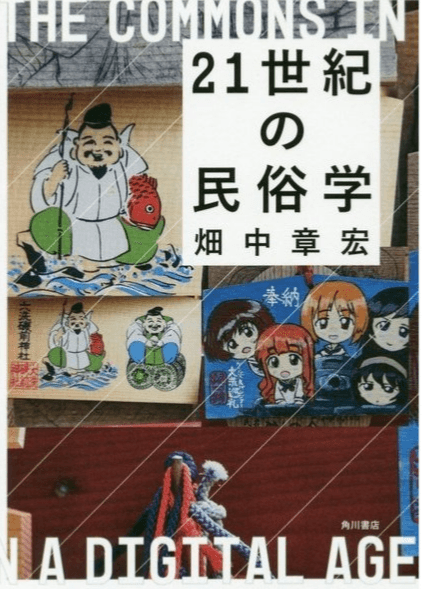
『21世紀の民俗学』(角川学芸出版)Amazon.co.jp



